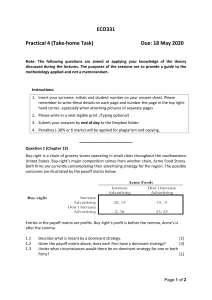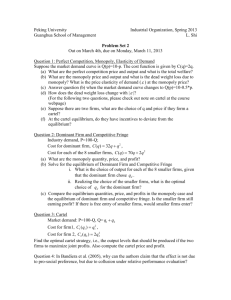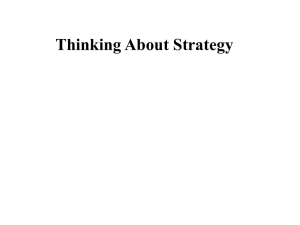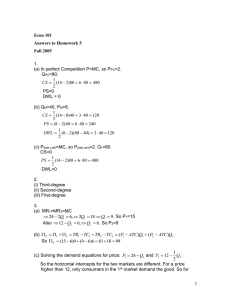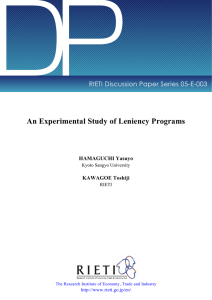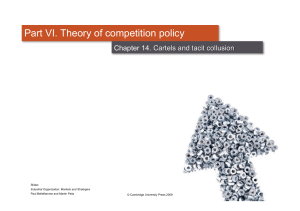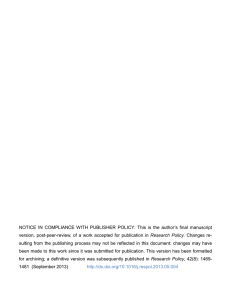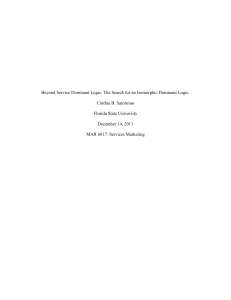Economics 103 Lecture # 17 Interaction Among the Few
advertisement
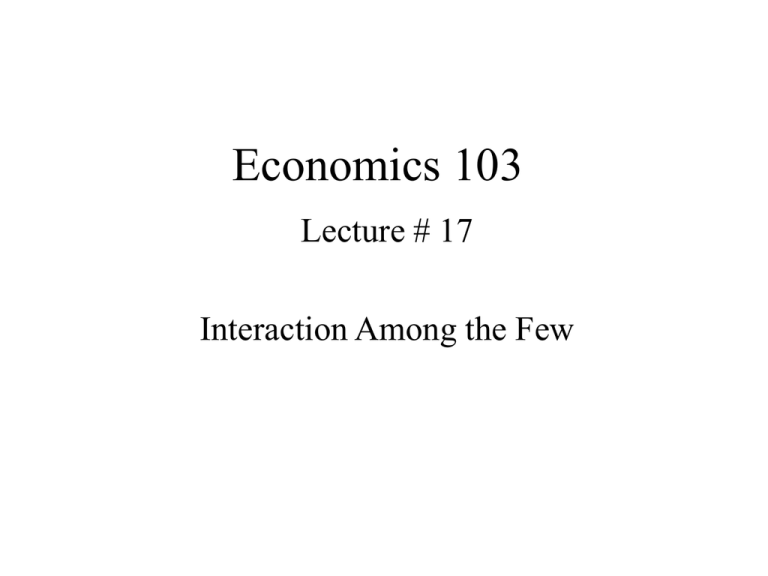
Economics 103 Lecture # 17 Interaction Among the Few To this point we’ve assumed: 1. Firms were so small relative to the market they could ignore other firms. 2. Firms were simple price takers and didn’t need to take into account the actions of others. But in many situations in life, we strategically interact with others. A few other examples: There is a language to talk about these situations: Game Theory. Strategy: the margin you make a decision on: up/down, price, etc. Pay-off: the reward: profit/utility Best Response: the best strategy, given the strategy of others. Nash Equilibrium: when everyone’s best strategy is the BR to the strategies of all the players. Dominant Strategy: always the best strategy, regardless of the strategies of the others. Common Knowledge: I know what you know, you know I know what you know, I know you know I know what you know …. -the princess bride. Let’s start with games of dominant strategies. Suppose we have to following, meaningless game. Player 1 is on the side, and the first number is his payoff. We can find the equilibrium by eliminating dominated strategies. Player 2, would never play M. Now, Player 1 would never play M or D. Player 2 would not choose R. Up, Left is the NE! There’s lot’s of examples of dominant strategies in life: You’re caught in a battle, what is your dominant strategy? Do you remember this movie? The Prisoner’s Dilemma Do you recall the interrogation scene from this movie? Here you separate criminals and give them the following payoff. This game is interesting because -both players have a dominant strategy, and - the outcome is not Pareto optimal. People don’t like the PD outcome, and we do things to avoid it. - The PD game is relevant to us because colluding firms face a PD situation. It doesn’t take a genius to figure out that if a group of competitive firms can restrict output, they can raise price and transfer wealth to themselves. The question is, why don’t competitive firms do this? The answer is that each firm has a dominant strategy to violate the collusive agreement. The cartel must figure out a way to police the individual firm. This means the conditions for collusion are quite limited. 1. There should be no fringe of small firms. 2. Entry to the industry should be costly. Eg. Resource based. 3. Standardized products to police cheating. 4. Inelastic demand. Second law of demand works against collusion. Competition Policy in Canada. Anti-trust laws in our country are designed around the models we’ve looked at. - Our Anti-trust laws go back to 1889, The Combines Investigation Act. “Criminal offense to conspire to unduly lesson competition.” - In 1986 it all changed. - Generally speaking, Horizontal restraints (cartels, bid rigging, etc) are generally per se illegal. - If the tribunal does not have direct evidence of a cartel, then it looks at circumstantial evidence. - - With the other situations (eg. Tie in sales, RPM, etc.) the tribunal listens to efficiency arguments, and tries to decide if the act is competitive or not.



